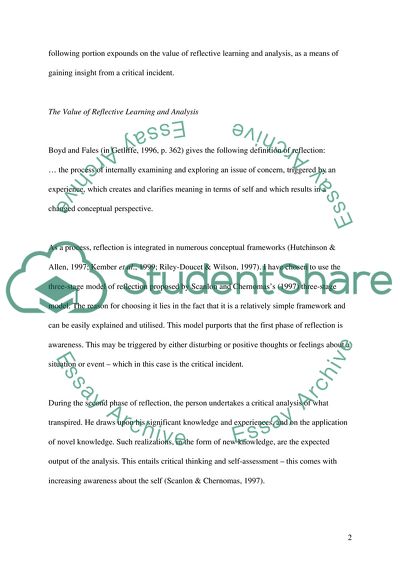Cite this document
(Learning from a Critical Incident Assignment Example | Topics and Well Written Essays - 4000 words, n.d.)
Learning from a Critical Incident Assignment Example | Topics and Well Written Essays - 4000 words. Retrieved from https://studentshare.org/education/1703081-critical-incident-analysis-using-a-reflective-framework
Learning from a Critical Incident Assignment Example | Topics and Well Written Essays - 4000 words. Retrieved from https://studentshare.org/education/1703081-critical-incident-analysis-using-a-reflective-framework
(Learning from a Critical Incident Assignment Example | Topics and Well Written Essays - 4000 Words)
Learning from a Critical Incident Assignment Example | Topics and Well Written Essays - 4000 Words. https://studentshare.org/education/1703081-critical-incident-analysis-using-a-reflective-framework.
Learning from a Critical Incident Assignment Example | Topics and Well Written Essays - 4000 Words. https://studentshare.org/education/1703081-critical-incident-analysis-using-a-reflective-framework.
“Learning from a Critical Incident Assignment Example | Topics and Well Written Essays - 4000 Words”, n.d. https://studentshare.org/education/1703081-critical-incident-analysis-using-a-reflective-framework.


